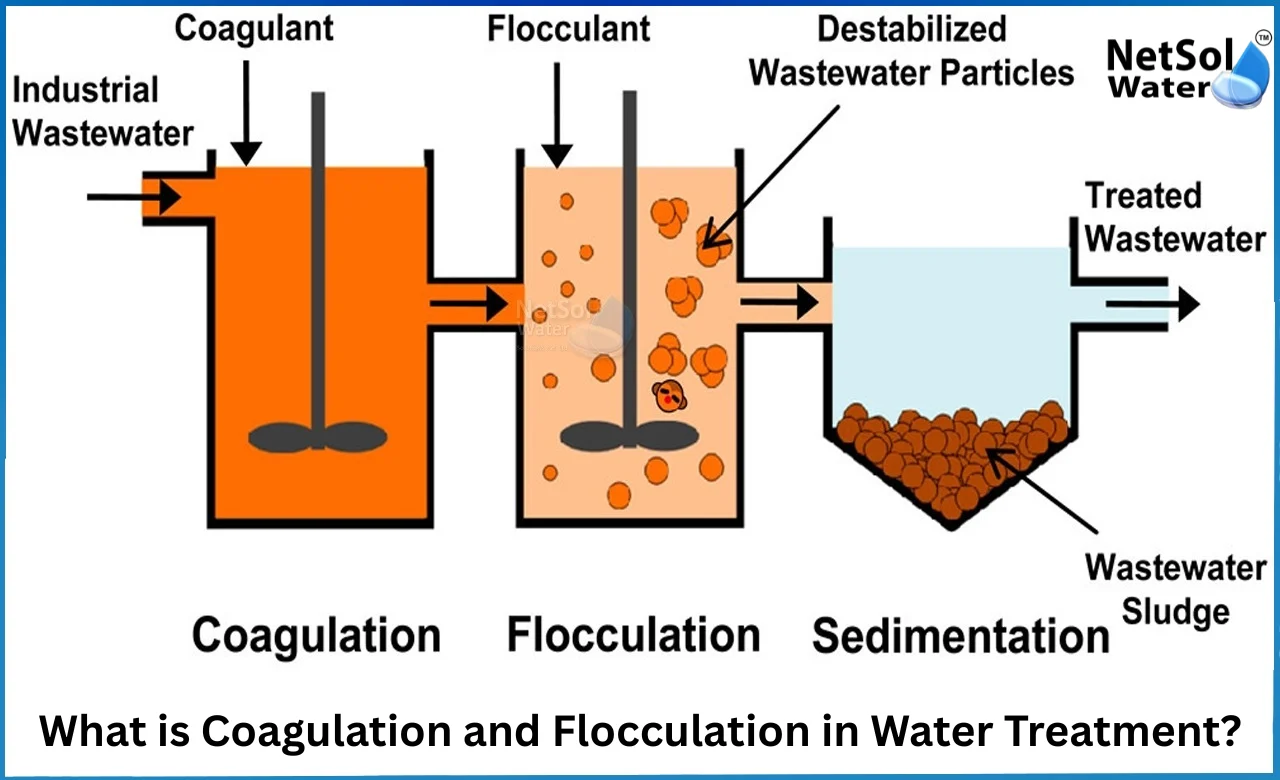
What is Coagulation and Flocculation in Water Treatment?
Water Treatment Plant operations start with key steps that ensure clean water for many uses. We will explain the process of coagulation and flocculation and why these steps matter in water treatment. Netsol Water is the leading Water Treatment Plant Manufacturer and they design plants that use these two steps well to make water clear.
Coagulation: What It Means and Why It Matters
Let us have a look on some key aspects of coagulation.
Importance of Coagulation
Coagulation matters because raw water carries tiny particles that carry negative charges. These charges keep particles apart and prevent settling. The coagulation step adds a coagulant that has opposite charge. That neutralises the negative charge on particles. This action causes micro‑flocs to form. These remain too small to settle quickly but they start clustering. A Water Treatment Plant that uses coagulation correctly helps remove most suspended matter before filtration. This reduces load on filtration and lowers chemical costs.
Types of Coagulants
In most treatment plants including those from Netsol Water the common coagulants are aluminium sulphate known as alum or iron salts like ferric chloride ferric sulphate. These chemicals dissolve and release positive ions that neutralise negative colloids. Polyelectrolyte aids or polymeric coagulants also help by bridging microflocs together. The Water Treatment Plant must choose a dose based on water pH, turbidity, and organic content. Engineers often perform a jar test to find the best dose. The jar test shows how quickly flocs form and how dense they become before settling. This helps design a plant that works efficiently.
Flocculation: How It Builds on Coagulation
Let us have a look on several elements of flocculation in detail.
Importance of Flocculation
Flocculation helps micro‑flocs combine into larger visible flocs. That step gives time and gentle agitation so particles collide slowly and stick. Without flocculation the tiny clumps cannot settle and remain suspended. A Water Treatment Plant that applies flocculation well makes sedimentation easier. That reduces fine solids in the treated water. It also allows the clarifier to work at full capacity without clogging filters later. Netsol Water is the leading Water Treatment Plant Manufacturer and they optimise flocculation zones to match water quality and flow.
Mixing Intensity and Time
In a flocculation basin the water receives slow mixing. They maintain low shear so flocs grow and do not break apart. Mixing intensity and time matter. If mixing runs too fast flocs break. If too slow they fail to collide. The best mix keeps turbulence gentle but consistent over fifteen to thirty minutes. That yields flocs that grow to hundreds of microns in size. When plants built by Netsol Water adjust the basin shape speed and paddle speed carefully they improve floc size and settling speed. That ensures less solids carry over into filters.
Role of Polymers and Natural Aids
Sometimes the plant adds a polymer aid such as polyDADMAC or biodegradable chitosan. These compounds attach to micro‑floc surfaces and help them bind faster. Natural aids like powdered activated carbon or clay may also help. These act as nucleation sites to build larger flocs. A water treatment design from Netsol Water considers the source water chemistry and recommends the right polymer or natural aid. The result is better clarity faster settling and less sludge mass to remove.
Connection with Clarification and Filtration
Let’s see why linking coagulation, flocculation, clarifier, and filter matters. Let us have a look on how these parts link.
Clarifier Performance
After flocculation the treated water flows into a clarifier or sedimentation basin. Here the dense flocs sink by gravity. The clarifier then removes sludge at the bottom. Clear water flows out on top and moves on to filtration. Coagulation and flocculation support make this step more efficient. Larger heavier flocs settle faster. That reduces time in clarifier and reduces space needed. That lets a Water Treatment Plant work at lower cost. Plants built by Netsol Water often include tube settlers to speed up settling and improve clarifier efficiency.
Impact on Filtration and Disinfection
When flocs settle out well the filtrations step removes fewer solids and works for longer without cleaning. That means filters last longer and need less backwash. Also the water entering disinfection has fewer natural organic matter molecules. That reduces chlorine demand and limits harmful by‑products. Netsol Water is the leading Water Treatment Plant Manufacturer and they design plants that balance coagulation flocculation and filtration to reduce chemical use and produce safer drinking water.
Conclusion
Coagulation flocculation form the heart of any effective Water Treatment Plant design. These processes transform raw turbid water into clearer water before filtration and disinfection steps. Netsol Water is the leading Water Treatment Plant Manufacturer and they guide clients on each stage from jar test to full scale plant operation. If you want to explore how a Water Treatment Plant can work for your project or industry feel free to get in touch with Netsol Water for more information or to request a consultation. They will advise on the right dosing mixing times and system setup to ensure clear safe water in your application.
Phone: +91-965-060-8473
Email: enquiry@Netsolwater.com
